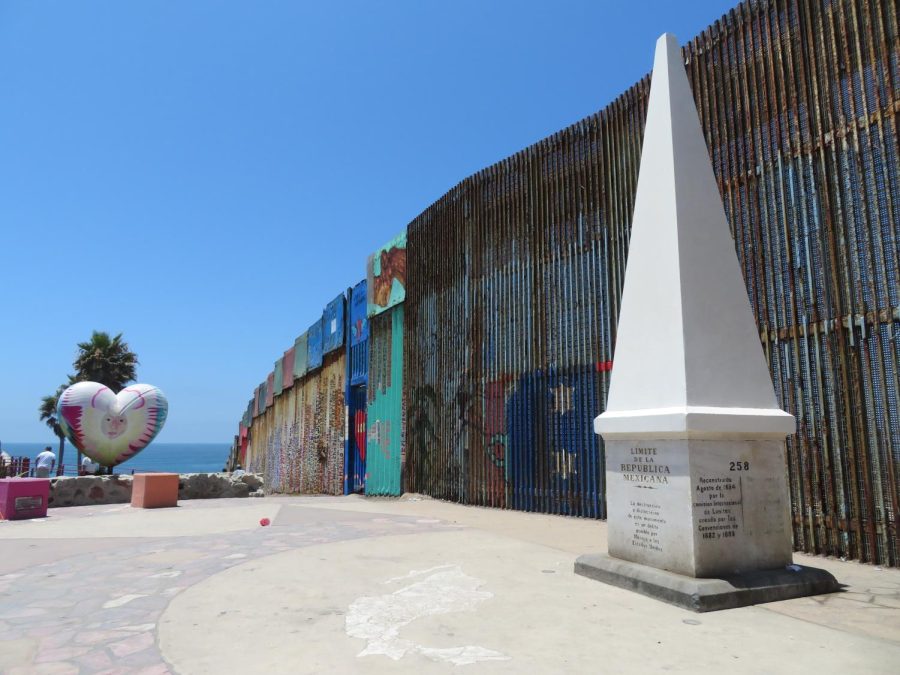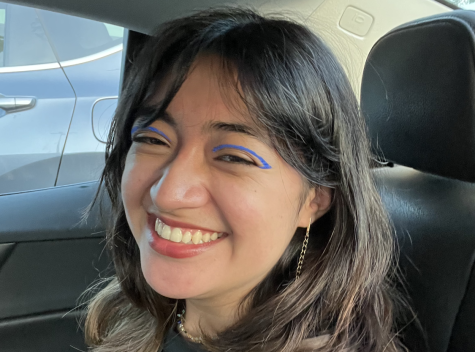From the beach, the ocean extends into the horizon towards the west. A narrow (yet seemingly endless) strip of sand stretches to the south. The boardwalk and heaps of local businesses crowd the east. To the north, a jarring, unsightly tall-and-thick rusty pillar fence covers the horizon.
The land on either side of the fence is known as Friendship Park. It’s a place that holds great historic and cultural significance for the polycultural community on both sides of the border. Its historical significance is particularly emphasized as it is the home of the monument that originally marked the border, which is on the National Register for historic places.
Friendship Park was recently threatened by President Biden’s continuation of a new border wall. Although construction has been paused due to the binational outcry, it remains to be seen whether Border Patrol will allow continued access to this public space.
Customs and Border Protection announced Aug. 4 they are “committed to preserving access to Friendship Park.” Although a relief for border communities, recent decades show binational solidarity with Mexico is an afterthought for federal administration as their decisions pander to racist, anti-immigrant, bigoted groups. They fail to consider the needs of the binational community that uses this space.
The heavy policing of the park speaks loudly — it reveals an agenda that does not care for the affected individuals.
Professor of Chicana and Chicano studies Roberto Hernández said the border divides a community that has stood together for ages.
“What does it do to the sense of community,” he questioned.
The community at Playas de Tijuana has beautified the plain, salt-worn metal pillars by covering them with art. Faces of deported immigrants float from the edge of the beach and into the ocean, where the fence marches into the waves. Another artist “erased” some of the pillars by painting them to blend into the sky, the ocean, and the sand.
The U.S. side shows a heartbreaking contrast. Due to accessibility impediments, including the construction of a second wall, it has become barren. In noticing this disparity, it becomes important to think of the kind of border that the community wants to try to create.
Not long ago, the boundary was a single chain-link fence that inched into the ocean. Hernández remembered spending days during childhood along the border wall
“At low tide, you could walk around it and not get your feet wet,” Hernández said.
When the park’s visitation hours weren’t so restricted, visitors would play volleyball using the fence as a net, defying the wall’s intent to limit their engagement.
Today, the park remains closed most days. Over the course of this century, access has become more restricted. The Friends of Friendship Park’s website states it clearly: “The current restrictions on public access to the U.S. side of Friendship Park make a mockery of the notion of international friendship.”
Although this community fights to keep this space active and culturally rich, the second wall in the U.S. has been a hindrance. Hernández said that the second wall with a gate has created “conditions similar to visitation hours” as if they are incarcerated.
When it comes to national politics, the border is a question of law and order. As a Democrat, Biden faces criticism for any open-border actions. Hernández said Biden’s administration is trying to compensate and challenge the perception that their opponents have advanced. Instead of challenging the claim that Biden’s administration has an open-border attitude, they have gotten more strict with border access.
As a specialist in the U.S.-Mexico border, Hernández said he is frustrated about current developments at the border.
“The problem is not the border but economic policies that displace people internally within Mexico, Honduras, Guatemala, that put them in this position of having to migrate,” he said. “[These are] realities that cannot be solved by throwing money at a wall.”
The effort to fortify the wall under the guise of maintenance attempts to bandage the real problem. Hernández emphasized that this expensive development of infrastructure has become “politically expedient” for Biden, as his administration attempts to appease the “unfounded right-wing concerns that he is an open-border kind of guy.”
According to Hernández, initiatives such as Operation Gatekeeper in 1994 are a “show force” as they are stationed in cities with larger populations. As a result, said forces are in the spotlight, creating an illusion the government is doing something.
This optics-game feigns an attempt at reducing the influx of undocumented migrants and resulted in an uptake in deaths at the border as those that need to get accross were forced into more dangerous terrain. This fiscal year alone, a new record was set: nearly 750 migrants have died crossing the border.
The preservation of Friendship Park will only be addressed if people continue to advocate for its preservation. Organizations such as Friends of Friendship Park provide options for supporting the cause. Their continued efforts, alongside those of organizations like American Friends Service Committee and Border Angels, have protected the park, but it’s time more of us realize how important our participation is.
The U.S. side of this rich, polycultural space can be revived. Perhaps sometime in the future we can stand in Playas de Tijuana and find an open park when we look North—a renewed, cared-for meeting ground for families and loved ones, enriched by the art of the community it was always meant to serve.












